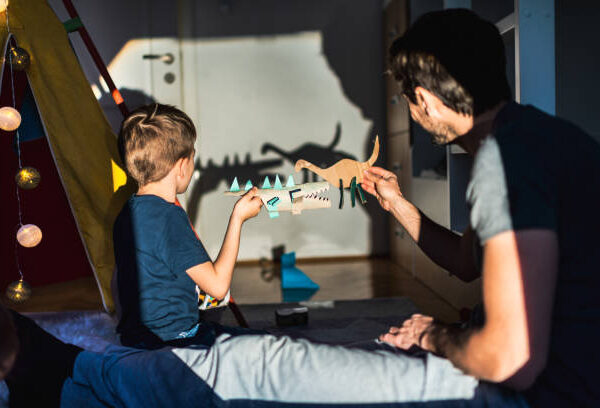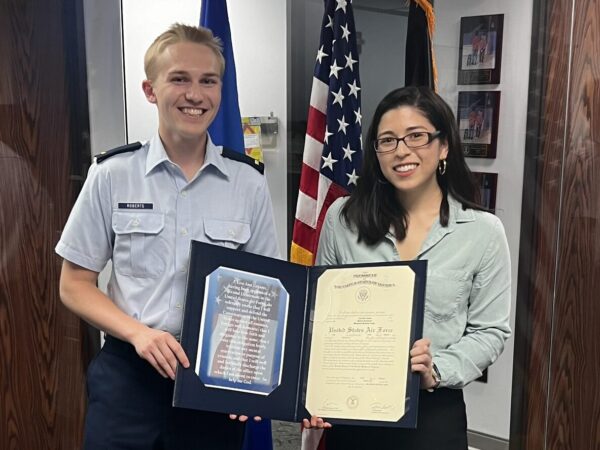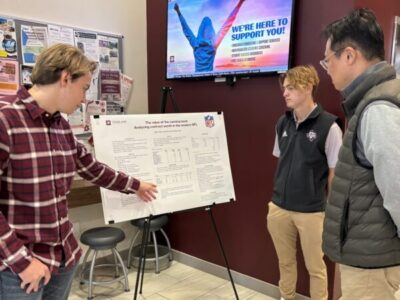
STEM And STEAM: Can Science And Math Really Be Creative?
It is a growing movement – the change from STEM to STEAM. STEM brings together the four basic disciplines of science, technology, engineering and math. STEAM brings in art and design.
The goal of the STEAM movement is to place art and design at the center of STEM and encourage integration of art and design in K-12 education.
For Drs. Robert and Mary Margaret Capraro, professors in the Department of Teaching, Learning and Culture in the College of Education and Human Development, forcing the addition of arts may not be the answer.
“When we add the A, quite often the message is that science, technology, engineering and math aren’t creative subjects. The implication is that they are these boring subjects you had to suffer through in school in which there was only one right way to solve every problem,” explained Robert.
He points to centuries-old number systems that were developed to solve the problems of the day. That, he says, is creativity in mathematics. “The problem is we don’t teach these subjects as creative endeavors.”
CREATIVITY IN AGGIESTEM
That is where AggieSTEM summer camps come into play. While many scientists may not consider themselves creative, more and more research points to the fact that the best scientists are the most creative ones.
“In our world, we’re realizing – and it is becoming more and more true – that there is no isolation. There is so much crossover and more jobs and careers that have a way for people to integrate things that used to seem unrelated,” said Dr. Sandra Nite, a research scientist in the Department of Mathematics.
Nite created a questionnaire for students attending these summer camps. It provides them an opportunity to share their opinions about creativity.
The students are asked at the beginning of camp if they anticipated using creativity in activities they would be involved in. At the end of camp, they are asked if they did use creativity in those activities.
“We were interested in debunking this idea that math, science, technology and engineering weren’t creative in and of themselves. That, in order to add creativity, you had to add the arts. Really, the arts are about creativity and that creativity is resident in all of these subjects. It’s up to the person to bring out that creativity,” said Robert.
“We wanted to make students think about and be aware of the creativity. We also wanted to find out how they used their creativity. Oftentimes, we found they used their creativity in a class where we didn’t think there was much opportunity for it,” added Nite.
Take 3D printing for example. During AggieSTEM camps, students are given 3D printing tasks ranging from creating their own design and printing it to modifying an already-created design to print.
The students quickly realized a lot of creativity was involved. They found they had to use math and geometry they already knew, but in new ways to make their designs become reality.
IN TODAY’S CLASSROOMS
As a teacher, how do you incorporate these types of activities without the budget for 3D printers and other advanced technologies?
For Mary Margaret, the answer is simple – problem posing.
In many classrooms today, teachers give the problem and a student solves it. There is very little creativity because there is usually just one correct answer to that problem. But, her focus is on the different ways of coming to that answer.
“If a teacher asks, ‘how did you solve it?’, there is room for creativity because not everyone will solve the problem the same way,” said Mary Margaret. “In problem-posing, students are able to pose their own problems. Everyone’s answer is totally different. This encourages creativity in today’s classrooms.”
She pointed to a recent example used in her research regarding pictures of animals from the movie “Zootopia.” In the classroom, students were able to make up their own problems based on those animals. For example, they asked “how much taller is the giraffe than the zebra?” or “which one is the tallest of the animals?”.
Robert summed it up by focusing on the importance of looking at learning as a destination as opposed to learning as a trip. There are many different ways to get to a destination as long as you get there.
“Changing the way teachers teach is what’s important. Teachers need to remember they are there to nurture that creativity in their subject. Students need an experience with teachers who are able to take them through that circuitous route.”
He hopes, through AggieSTEM summer camps for students and summer boot camps for teachers, Texas A&M can make a difference in today’s STEM classrooms.
For more information about AggieSTEM summer camps for teachers and students, visit tx.ag/aggiestem.
About the Writer
Ashley is the Media Relations Coordinator and responsible for news coverage in the Department of Teaching, Learning and Culture as well as the Department of Educational Psychology.
Articles by AshleyFor media inquiries, contact Ashley Green.














